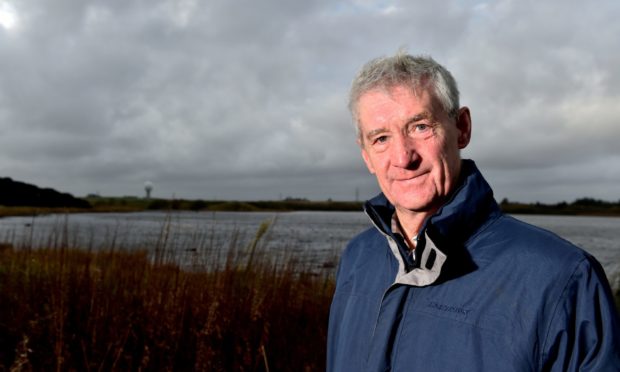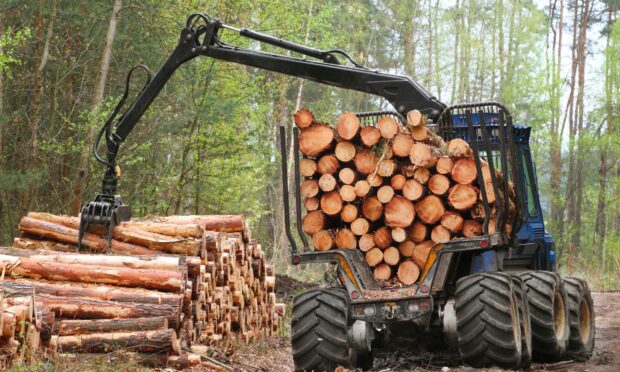COP26 in Glasgow is less than four months away and as North America experiences record temperatures, it’s a good time to reflect on how rural Scotland can play its part in tackling devastating climate change.
In doing so, I believe it’s vital that we think rural and not sectoral. For example, how can farming and forestry work together more closely and effectively?
At times like this I think back to this quote: “In Scotland, if you plant trees on farmland, it is somehow seen as a failure. My focus is to help change the mindset of the farming community, to see forestry as an asset, not a failure of the business model.”
Those words were spoken in 2017 by then North-East Scotland MSP Peter Chapman – and they have stuck with me not just because I agree, but because of the person who said them.
Peter Chapman is a well-known figure in north-east farming, and it would have been easy for him to stay away from what was, and sometimes still is, a contentious issue – but he saw the clear benefits of more closely integrated forestry and farming, both for farmers and for Scotland as a whole.
Trees aren’t every farmer or land manager’s cup of tea, but it’s an opportunity I would always urge them to think about.
With 75% of farmland in Scotland classified as Less Favoured Area (LFA) and with uncertainty over future funding models for rural activity, diversifying a rural business to include an area of tree planting can deliver clear long-term benefits.
As well as tax efficiency and a new income stream, the trees can often be planted on part of a farm where the land is not especially productive – and the woodland can grow to provide shelter for livestock, improving animals’ health and welfare and reducing feed costs.
Global demand
The world wants wood (I’m still waiting for my new fence after 10 weeks’ delay) so markets are getting stronger with new low-carbon uses of wood fibre being developed all the time.
The Scottish Government has recognised the increased use of wood in its plans for net-zero emissions by 2045.
And thinking net-zero and COP26, tree planting can address your carbon footprint, and markets for that carbon are increasing, potentially providing new income streams.
Government grants are available for farm woodland creation and the Scottish Forestry website lays these out very clearly – including a specific ‘Sheep and Trees’ package for hill and upland farms.
More information is online at forestry.gov.scot/support-regulations/farm-woodlands, alongside links to examples of farmers who have planted areas of trees on their land.
The diversity of species in modern productive forestry and the rigorous standards applied to them is a strength and an opportunity.
As Confor’s report on biodiversity shows, you can combine diversification of your enterprise with new habitats for wildlife.
And, as with carbon, work is ongoing to develop markets for the wildlife, flood management, water quality and other benefits of managed woodland – so-called ‘natural capital’, which could bring further income opportunities.
The modern face of forestry in Scotland includes a wide mixture of species.
For a great example of what this can look like, Atholl Estates has made a short video about woodland creation at Struan Point, just north of Blair Atholl, which describes the “mosaic” of woodland created on the site – from a protected birch wood to an area of productive spruce planting – and the wide range of benefits delivered. The video is on Atholl Estates’ YouTube page.
The diversity in modern forestry is a topic we’re picking up with the Scottish Government.
There is a new ministerial team in place at Holyrood and a focus on a green recovery from Covid which will promote sectors that create jobs and tackle climate change.
When I met with Mairi McAllan MSP, who covers forestry as part of her new Environment, Biodiversity and Land Reform portfolio, I focused on the positives of what tree planting and wood use can do for our environment, economy and society.
Our meeting came soon after a new piece of academic research by Bangor University, which showed that productive forestry can deliver significantly more net carbon benefits than more natural broadleaf systems in the same time period – up to two and a half times more in some cases.
While modern forestry has broader aims than carbon and is more mixed in its use of tree species than the model used in the study, this academic research demonstrates clearly the climate change benefits of an industry that also adds £1 billion in annual value to Scotland’s economy and employs well over 25,000 people – numbers that we know are growing each year.
As Peter Chapman recognised, modern forestry is very much a potential asset to farmers. If anyone would like to talk to Confor, please contact me or our National Manager for Scotland, Jamie Farquhar at stuartg@confor.org.uk and jamie@confor.org.uk
Our doors, and our email baskets, are open.
● Stuart Goodall is chief executive of Confor: promoting forestry and wood.


